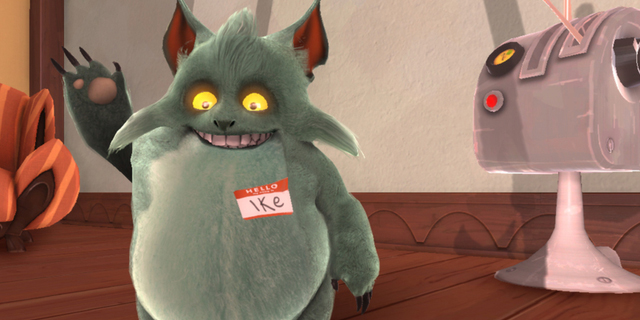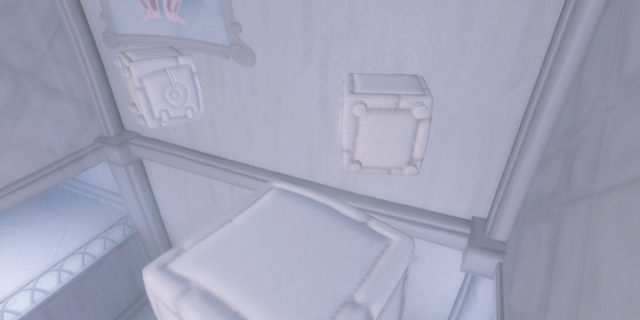
It is every designer’s dream to create a breakout hit, and Kim Swift did exactly that with Portal. Then, in a move that shocked everybody, she left Valve to make games with friends and ex-FASA (Crimson Alliance, Shadowrun) employees. From that odd move, Quantum Conundrum was born, and it’s really difficult not to compare it to Swift’s first retail game since the two are so very similar.
Each features a reluctant protagonist with a magical bit of technology that conveniently allows them to solve puzzles and eventually reach the end of the game. Each puzzle is self-contained, and there is a constant narrator to stave off feelings of isolation which seem much more prevalent from the first-person perspective than overhead. Portal featured the titular portal gun which allowed Chell to move from place to place and reach otherwise unreachable areas. Quantum Conundrum features the IDS glove which Professor Quadwrangle’s unnamed nephew uses to instigate dimensional shifts to move from place to place and reach otherwise unreachable areas.

Players of Portal wound up talking about how well-written their host GLaDOS was. Players of Quantum Conundrum will recognize John DeLancie (Star Trek’s Q) as Professor Quadwrangle who has gotten himself stuck in an alternate dimension but can still see and hear everything you’re doing and uses this unique predicament to narrate the story, drop hints at puzzle solutions, and mock you for taking too long to find him and help him out.
The puzzles are well-designed and the difficulty curve is nice and smooth. Both of these things are vital for a puzzle game. It’s nice that concepts are introduced slowly and then iterated on before you’re expected to combine them or taken away wholesale to force you to think outside the box that was just built for you. Where Quantum Conundrum fumbles a little bit is in its reliance on stacking and jumping puzzles. Without a portal gun, there aren’t a whole lot of other ways to reach high ledges, but stacking and jumping isn’t typically fun from the first-person perspective, and that holds true here as you get frustrated after having that “a-ha” moment and plan out your dimensional shifts, only to be foiled by not getting the jumps quite right to execute it.
Please don’t take my comparison to imply that Quantum Conundrum is somehow not worth your time. What I’m curious about is just how many times Kim Swift will be able to go back to this well before it stops being entertaining because right now I’m satisfied with having Portal, Portal 2, and Quantum Conundrum all taking up a slot in my Steam library. What the shift in development houses really illustrates is how Valve recognizes a concept and then polishes it until the shine is absolutely brilliant.
The obvious time spent writing GLaDOS in Portal and setting the stage with little areas that some players won’t even see contrasted with Quantum Conundrum’s blank walls and (as much as I love John DeLancie) not-as-engaging narrator show that it’s not enough to have a good concept and fun puzzles. What is going to keep people coming back to a game is the complete experience, and even though it takes Valve longer to get a product out, when it does you know it’s something special, and knowing Quantum Conundrum’s pedigree it hurts a bit to realize that you’re playing something good that could have been great.
Pros: Interesting concept, well-designed puzzles, good difficulty progression
Cons: After seeing what Valve did with Swift’s Portal, I really wish she’d stayed and applied the same game-making forces to Quantum Conundrum



















